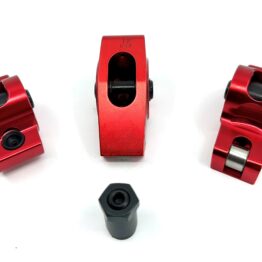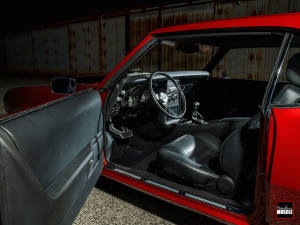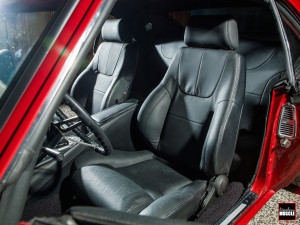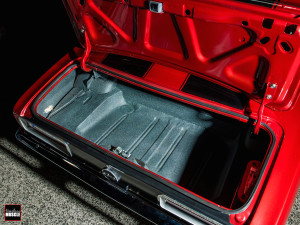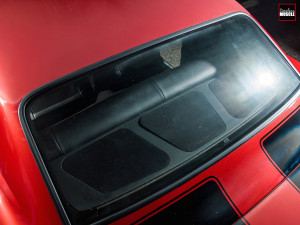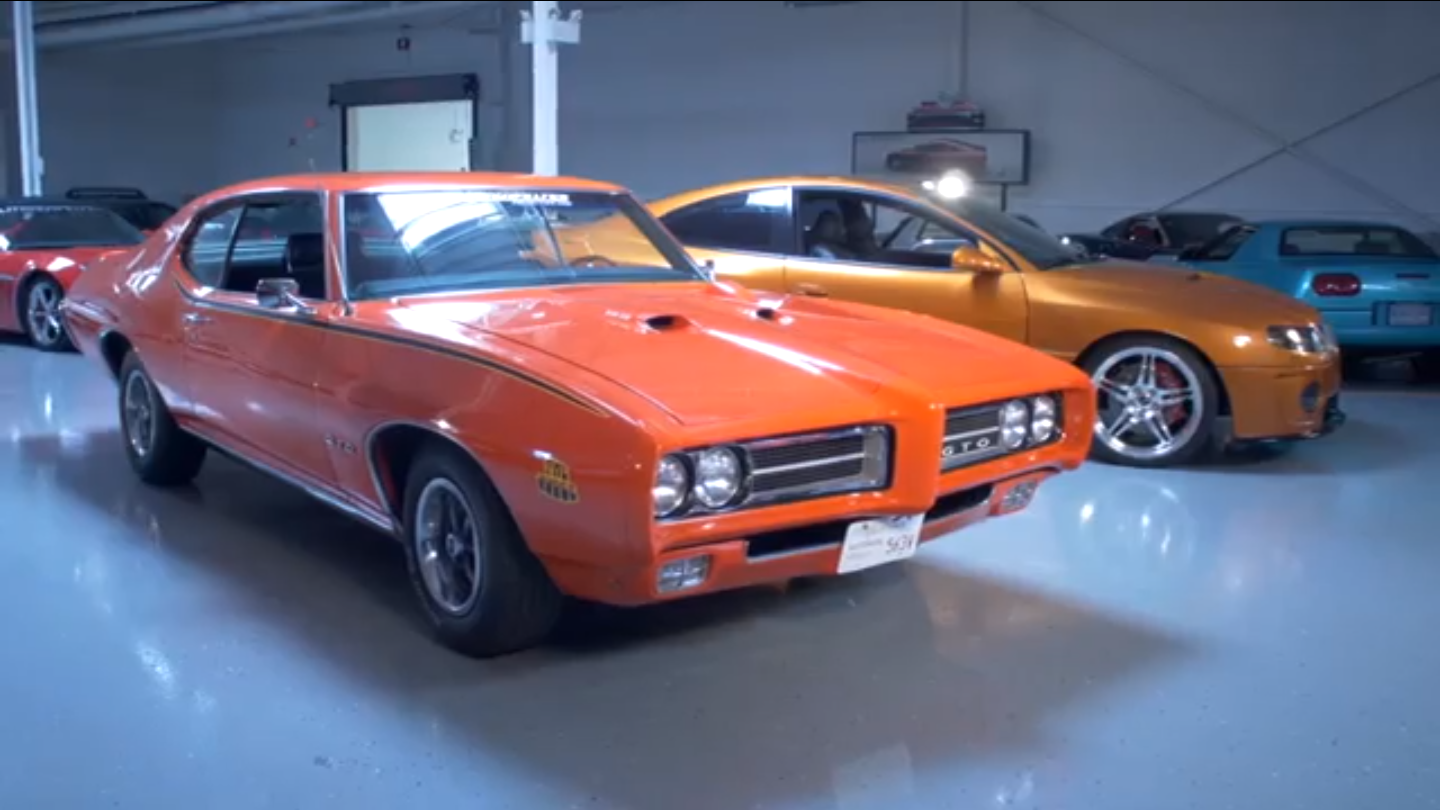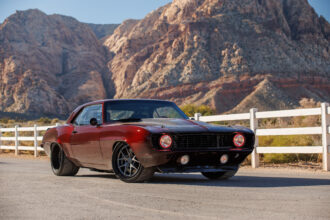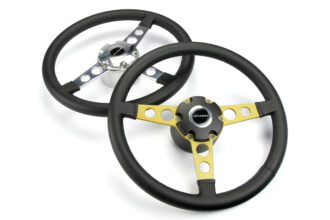Photos by: John Jackson
Cary Ostera’s ’68 Camaro is one for the ages – thanks to the crew at Gap Racing!
There’s been a little shop in Houston, Texas called GAP Racing, that’s been creating quite the stir in recent months thanks to an entry they’ve submitted at the Detroit Autorama show over the winter. In case you haven’t seen it, it’s the blue ’69 Mustang simply known as, “Stampede,” a built-from-the-ground-up pro-touring ‘Stang that has everyone talking.
But the shop who built it isn’t some fly-by-night one-hit wonder; they’ve been building hard-hitting, high-quality custom musclecars for years – including the car you see on this page. Starting with a ’68 Camaro, Tim Palazzolo and the crew at GAP took it down to nothing, and rebuilt it into the killer pony car you’re looking at now.
The car’s owner, Cary Ostera, wanted the look, feel and overall style of a classic first-gen Camaro, but also wanted modern comfort, conveniences, reliability and drivability. The initial plan, was a completely “stock-style” car with a classic big-block under the hood. Of course, plans change as they often do, and once Cary realized the level of professional work that the guys at GAP were capable of, the car morphed into something much more. It also had to be quite powerful, very balanced and needed 21st-century stopping power. Yup, you’ve guessed it, they’ve went for an LS-swapped pro-touring musclecar.
“Cary Ostera, wanted the look, feel and overall style of a classic first-gen Camaro, but also wanted modern comfort, conveniences, reliability and drivability.”
However, building a pro-touring pony car isn’t easy, cheap, nor for the faint of heart; it needs the right selection of parts, a high-revving, well-sorted powerplant and a crack team of equally well-sorted individuals handling the handiwork. This particular car was to be treated to components largely sourced from Texas, too. If you need further proof, continue reading.
Texas Speed supplied the hand-built LS3; installing a Callies stroker crankshaft and connecting rods, bolted to a complete set of Wiseco pistons. This particular combination of parts bumped up the stock displacement from 376 cubic-inches (6.2L), to a big-block displacement of 427 cubic-inches (7.0L). The compression specs in at a pump-gas friendly 11:1, with a Holley 302-1 oil pan and ported LS6 pump keeping the lubricting system copacetic.
Despite the all-aluminum wonder’s performance capabilities, the guys at GAP Racing went with an Edelbrock Victor Jr. intake manifold, to give a classic look to the ’68 Camaro’s engine bay. In place of the carb, however, they went with Edelbrock’s 1000 cfm, 4150-style throttle body paired with a set of eight, 50-lb FAST injectors, a Walbro 255 pump and an Aeromotive fuel pressure regulator pumping 48-psi. of fuel into the cylinders. This combination gives all of the reliability and performance of a modern LS, without the potential headache of adjusting jets and the general tuning of a carburetor. A K&N air filter is attached to the top.
Not being content with a 427 stroker LS3 with a carb-syle intake, Texas Speed also installed a custom grind camshaft of their own design, spec’ing in at 232/234 duration, 610/619 lift and a 110 LSA. This cam works in conjunction with a pair of CNC-ported Precision Race Components (PRC) LS3 casting heads, stuffed with 2.165 intake and 1.59 exhaust valves and trunnion-upgrade equipped OEM rocker arms.
The spark is controlled, via a stock set of [hidden] GM LS coils, MSD spark plug wires and NGK plugs while the spent fumes are expelled through Hooker long-tube headers, GAP-fabricated stainless X-pipe, 3-inch tubing and Magnaflow mufflers. The results produce an impressive 548 hp and 496 lb-ft. of twist to the rear tires!
As good as the car sounds, Cary didn’t want to blow out his eardrums on the highway, so he had the guys at GAP install a Circle D Transmissions 4L60E to keep drivability and fuel economy in check. A Circle D Specialties 3200-stall torque converter, TCI flexplate, Ron Davis trans cooler and a Lokar shifter round out the transmission details.
Having a high-performing engine and quick-shifting transmission is nothing without a solid rearend to back it up, and that’s why a narrowed Moser Engineering 12-bolt stuffed with an Eaton Tru-Trac, Moser axles and Richmond 3.73 gears makes the drivetrain recipe complete.
Of course, what’s the point of having a enough power to reverse the Earth’s rotation and the drivetrain to harness that energy, if the suspension charged with keeping the car glued to the pavement isn’t up to par? That’s why Total Cost Involved supplied the control arms, front sway bar and subframe, while Detroit Speed and Engineering (DSE) sent a set of leaf springs to the GAP Racing facility. An Addco rear sway bar and QA1 adjustable socks/struts sit at all four corners.
“Filling those rear wheel wells is a set of Billet Specialties Spline 18×12 wheels, mounted on Mickey Thompson 345mm-wide drag radials.”
DSE also had a part in fitting those beefy rear meats under the rear fender wells, thanks to their mini-tub kits. Filling those rear wheel wells is a set of Billet Specialties Spline 18×12 wheels, mounted on Mickey Thompson 345mm-wide drag radials. Much narrower versions of the same wheels are bolted to the front, spec’ing in at 18×8 on M/T street rubber, while Wilwood 13-inch brakes sit at all four corners.
With all of this impressive hardware found inside, outside and underneath this F-body’s shell, the GAP Racing team knew that they had to deliver aesthetics that were on par with its performance. That meant a complete overhaul of the Camaro’s cockpit.
The seats, headliner, carpet, steering column were all tossed, as well as the factory wiring harness, and in their place went 21st century technology. The factory insolation was trashed, too, and a more modern equivalent from Dynamat Xtreme that keeps the heat and road noise out of the cabin.
An Ididit tilt steering column brings a sense of style and safety to the Camaro and the Painless harness makes the modern LS powerplant, Vintage Air climate control, Dakota Digital gauges and electronic transmission work in perfect harmony. A JL Audio stereo system that includes a 6.5-inch package tray and kick panel, 8-inch sub in center of package tray and an amplifier hidden in trunk, fills the cabin with digitally-clear sounds, not the muffled, tinny one- or two-speaker stereo system, found in factory-correct 1st-gen Camaros.
“The black cockpit really pops with the black wheels, stripes, grille and rear valance panel of the Camaro’s exterior.”
The upholstery is top-notch, featuring a combination of deluxe factory panels, custom console and dash pad in column wrapped in black leather by Westside Upholstery in Houston, Texas. The black cockpit really pops with the black wheels, stripes, grille and rear valance panel of the Camaro’s exterior.
Speaking of which, the changes to the car were subtle but effective. A 2-inch steel hood hides the LS3 powerplant, a factory rear spoiler is mounted on the trunk lid, the firewall was smoothed out, while the front bumper and door locks were shaved. A carbon front splitter now resides where a factory piece would have gone, a custom lower valance is currently accounted for and all of the glass has been flush-mounted. The sheet metal was sprayed with a few coats of PPG Dark Red Metallic paint, which was handled by Matt McGarvey of HK Collision – also in Houston.
The purists might not like the fact that a ’68 Camaro was built this way, but it’s not up to them, it’s all about the owner’s happiness. He got what he wanted, and then some, with GAP Racing delivering one more beautiful piece of art to yet another satisfied customer. Whenever you can take the classic lines of a vintage car, and careful mold in the benefits of its younger forebear, it’s a win-win for everyone involved.

Rick Seitz is the owner and founder of AutoCentric Media, the parent company to Timeless Muscle Magazine, and has a true love and passion for all vehicles. When he isn’t tuning, testing, or competing with the magazine’s current crop of project vehicles, he’s busy tinkering and planning the next round modifications for his own cars.






